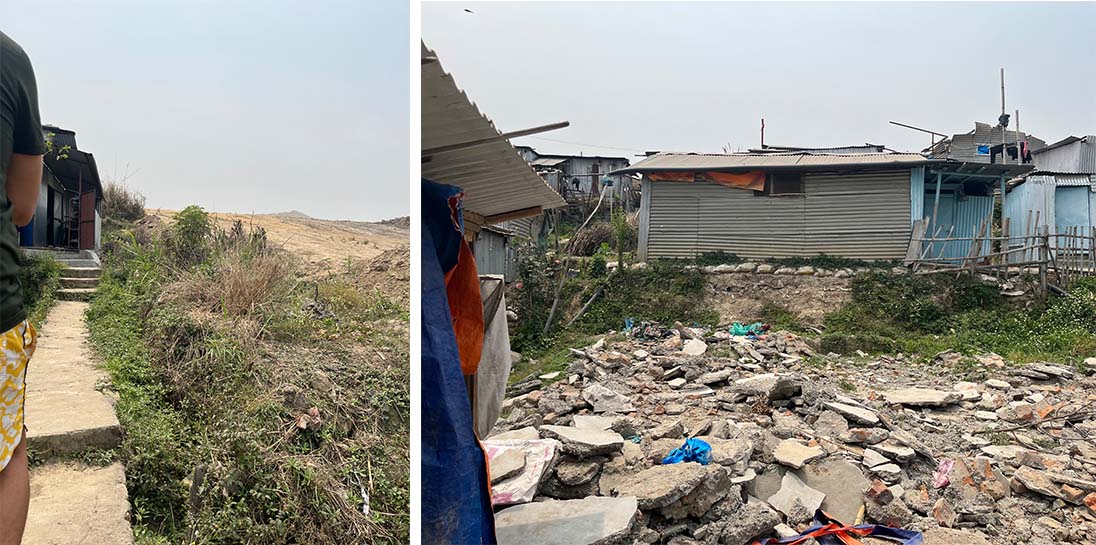Visiting the community for the first time in five years, so much had changed around them and to them — so many new houses, roads, and factories. The luscious green fields that had surrounded them were now dust bowls, waiting for construction to begin. There were fewer houses in the community now, rubble left where once there had been a home. Even though they signed a 25-year lease, with no legal options available, our beautiful community had become another Covid statistic. The landlord was unable to make payments on his mortgage, and the bank was taking back possession. Even though no one was sure when that would happen, some whanau/family had already decided to leave. To be with Lalmaya again, like Nanimaya, this woman is my Nepali sister, and it’s hard to describe the aroha (love) we have for each other. There were plenty of awhi (cuddles) and aroha and a few tears over the course of our visits.

To see the children again, who are no longer children, but young men and women, was incredible. Their parents had the opportunity to raise them with some support and stability, which enabled schooling, and some of them are now teachers and offering the education they were taught. They are such a religious community, deeply Christian, but with their Eastern influence, it’s a religion lived every minute of every day, not once a week tokenism as other cultures. We arrived at the end of their Saturday church session (Saturday is their day off over there) and the subsequent children’s Sunday school lesson.

When we arrived the following weekend, more community buildings had been removed. Thankfully, they have secured another piece of land for rent (closer to the kiln factories, so more pollution for them) with a long-term lease and clauses in the contract this time. The ground is flat where they are moving to, so they can live differently than they have been on the sloped land they terraced in 2016. They have a month to move, so whatever is salvageable is being removed to be reconstructed in their new homes, including the corrugated iron and timber wall linings. The water tanks, pumps, troughs, and pipework will also be removed and reconstructed in their new location; the only things they’ll be leaving are the wells and sanitary sewerage tank.
I’m so proud that they’ve been able to do this move all on their own financially. Another sustainability project in action that HLF has been honoured to be a part of, and I can’t wait to visit their new location next year.


